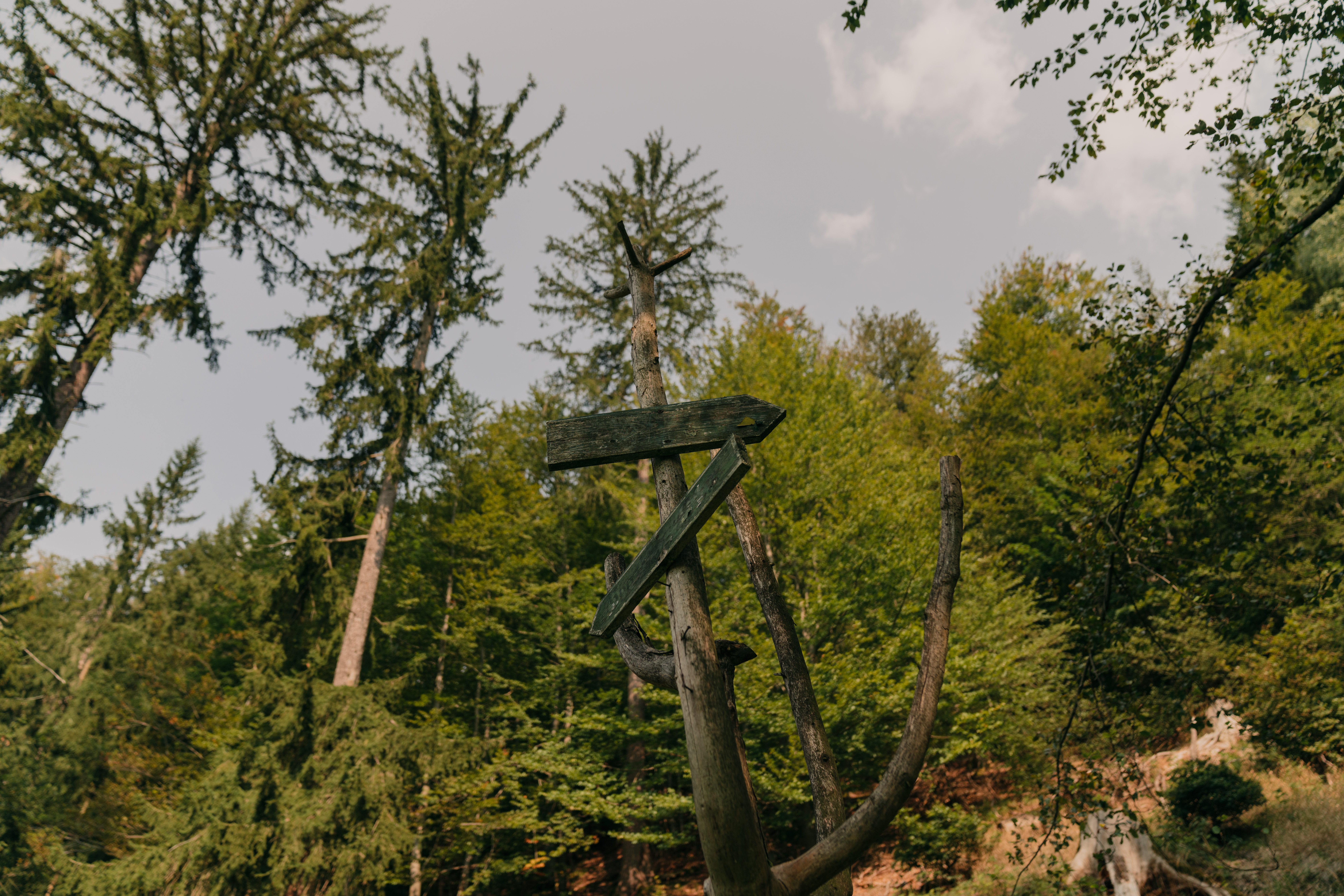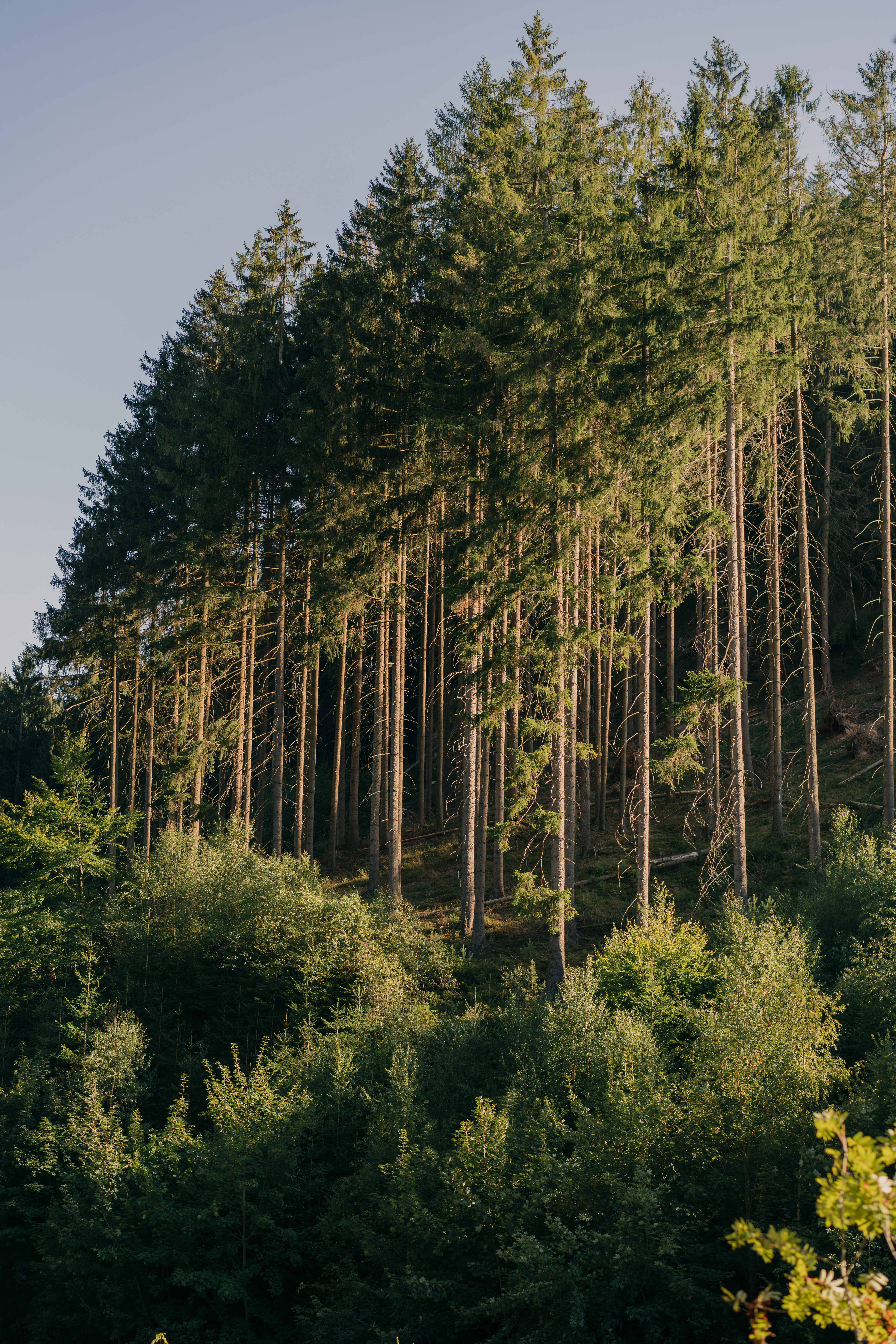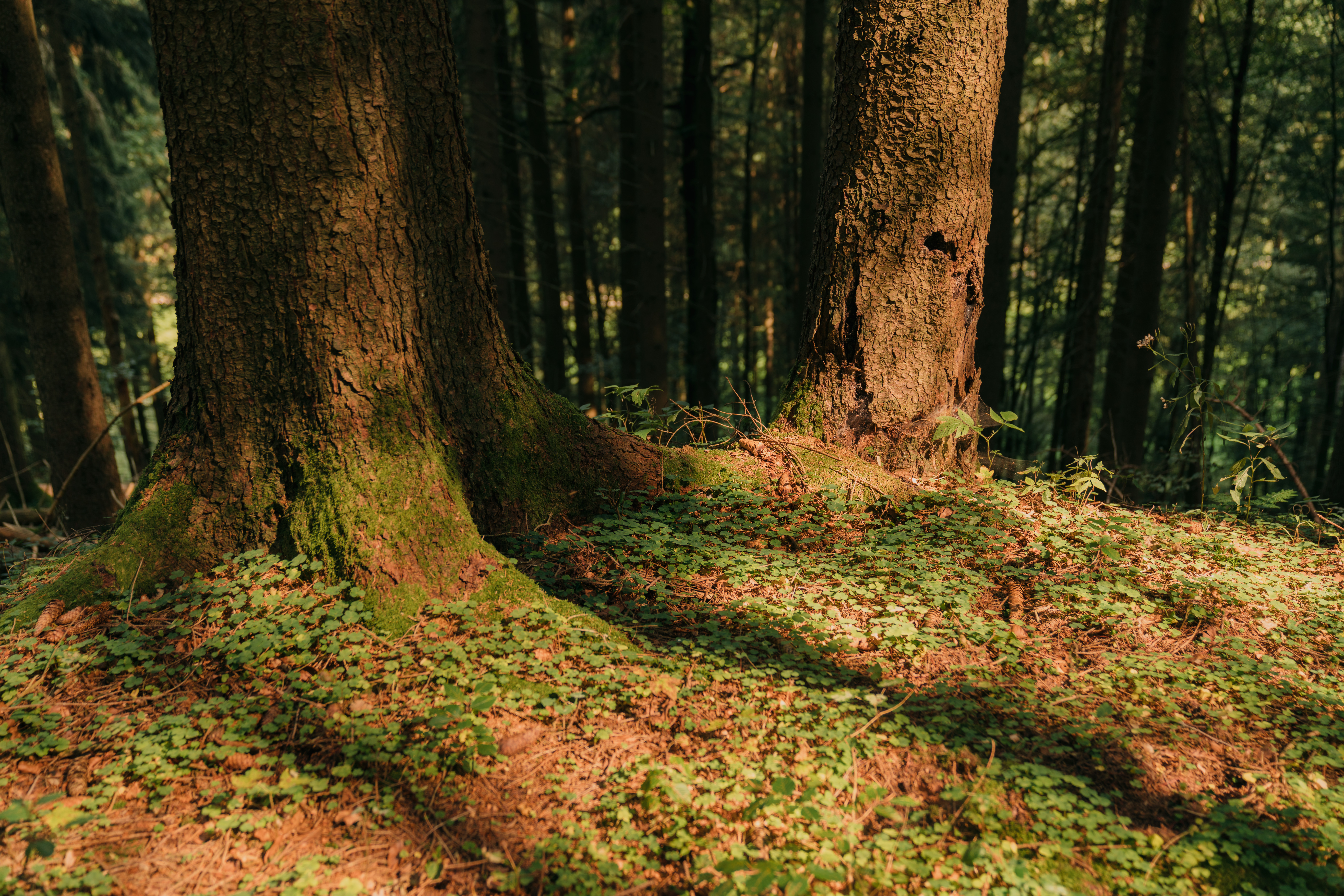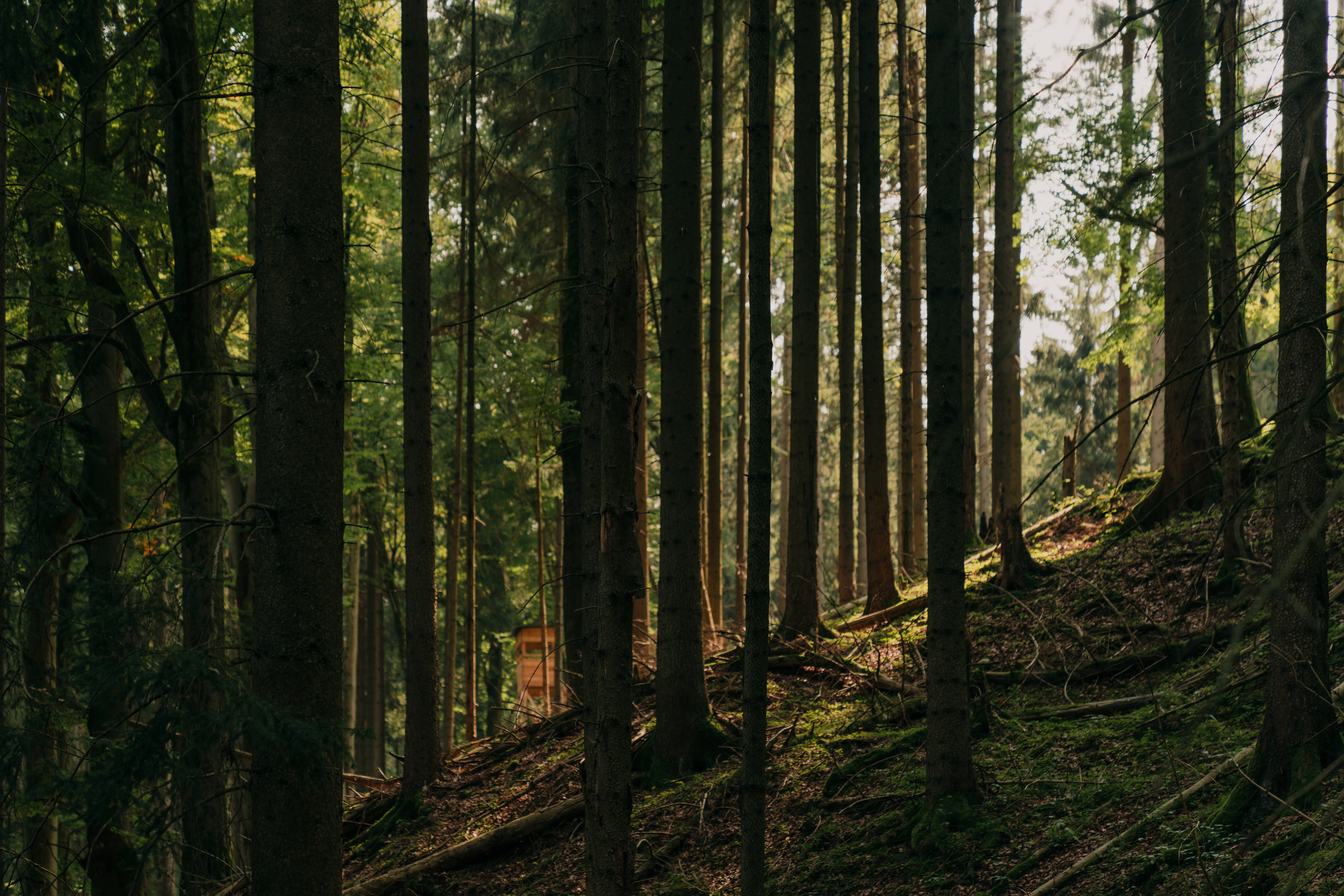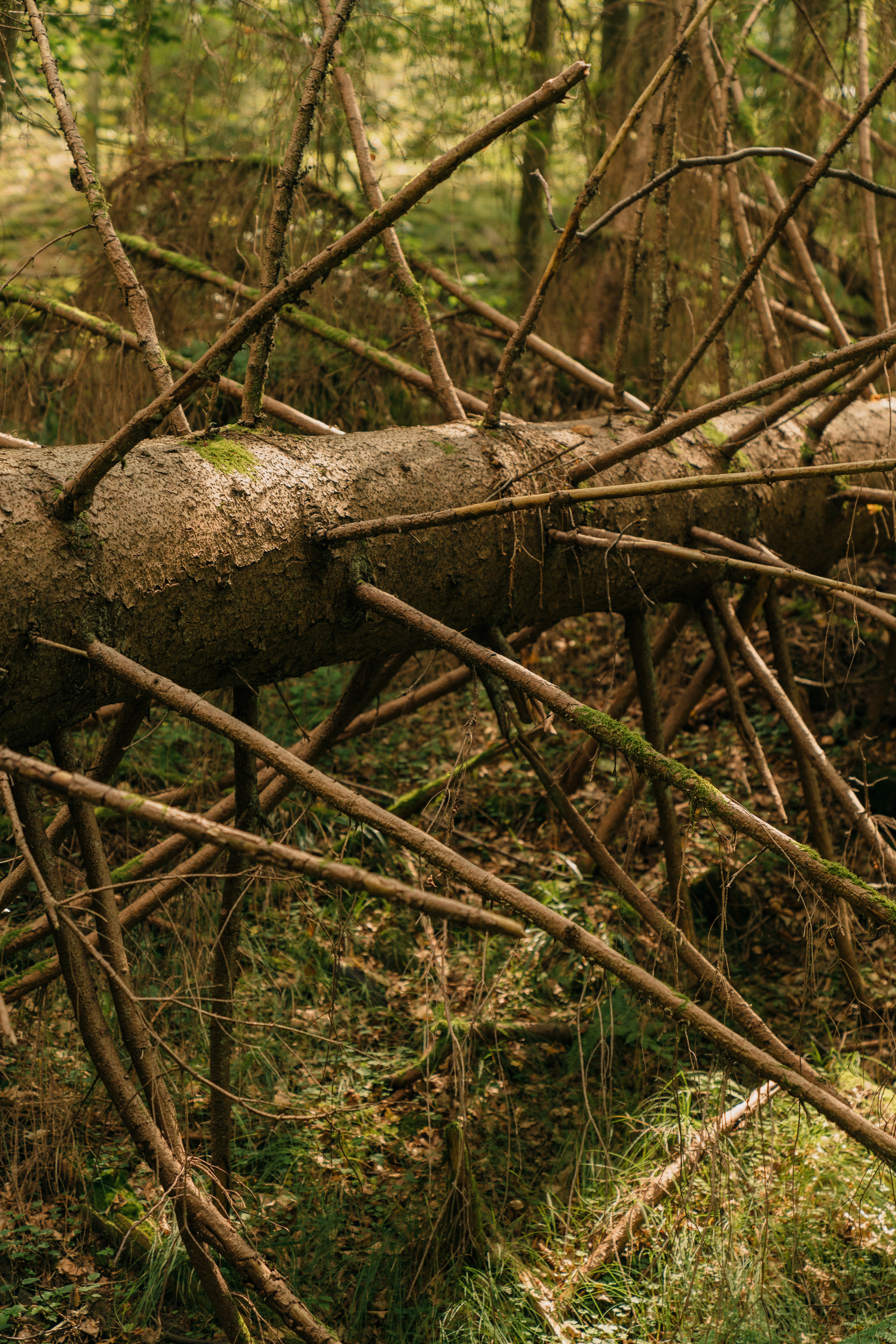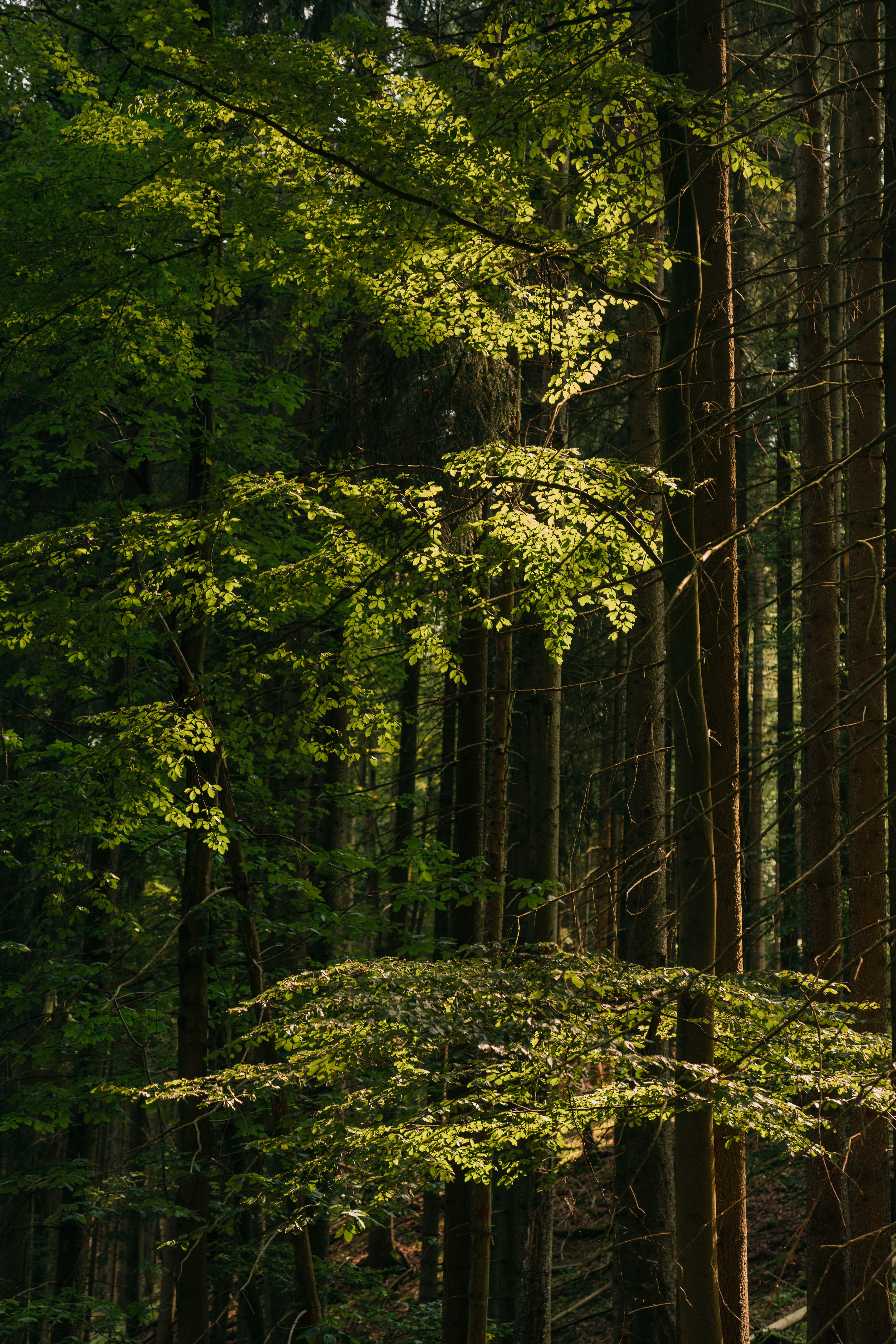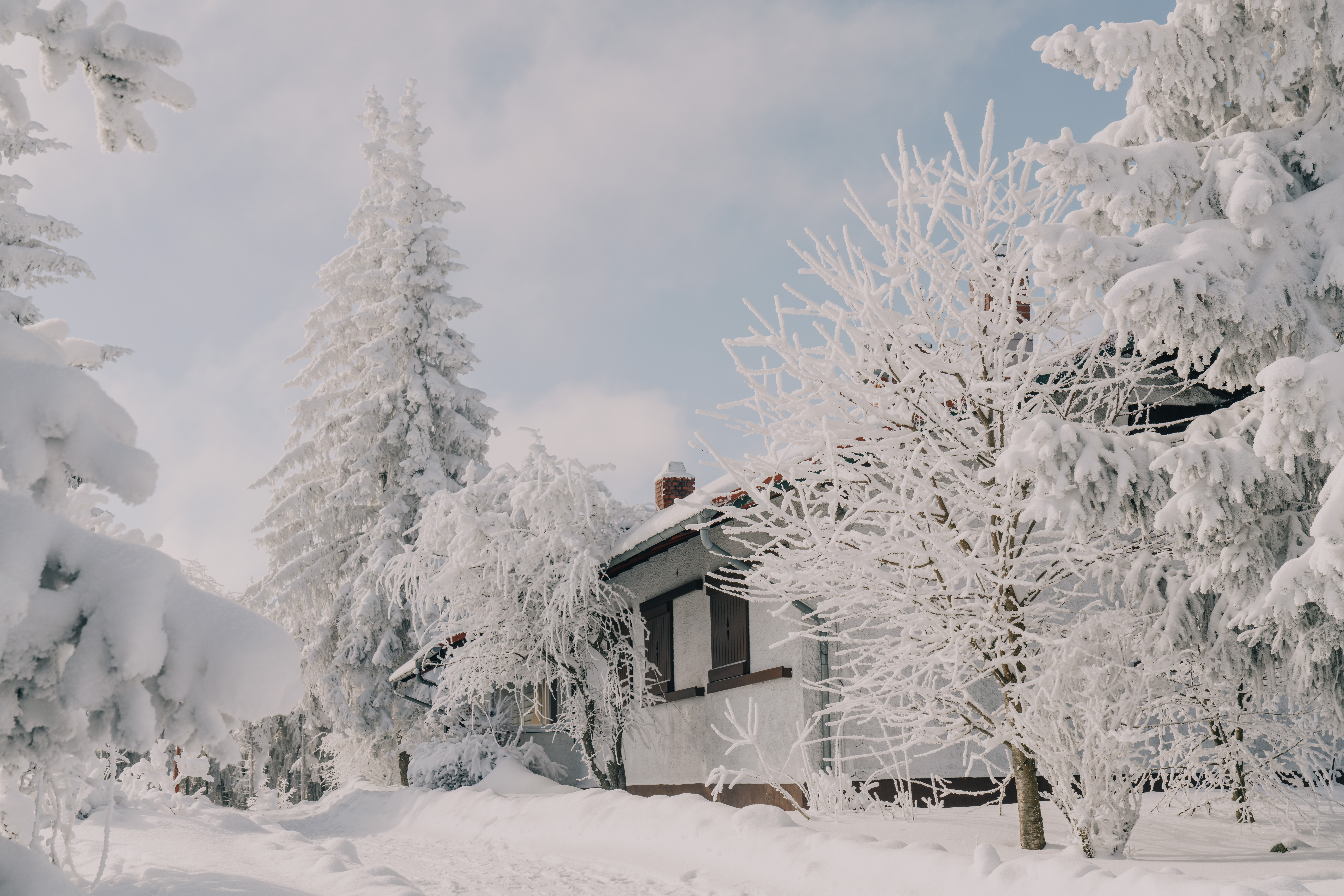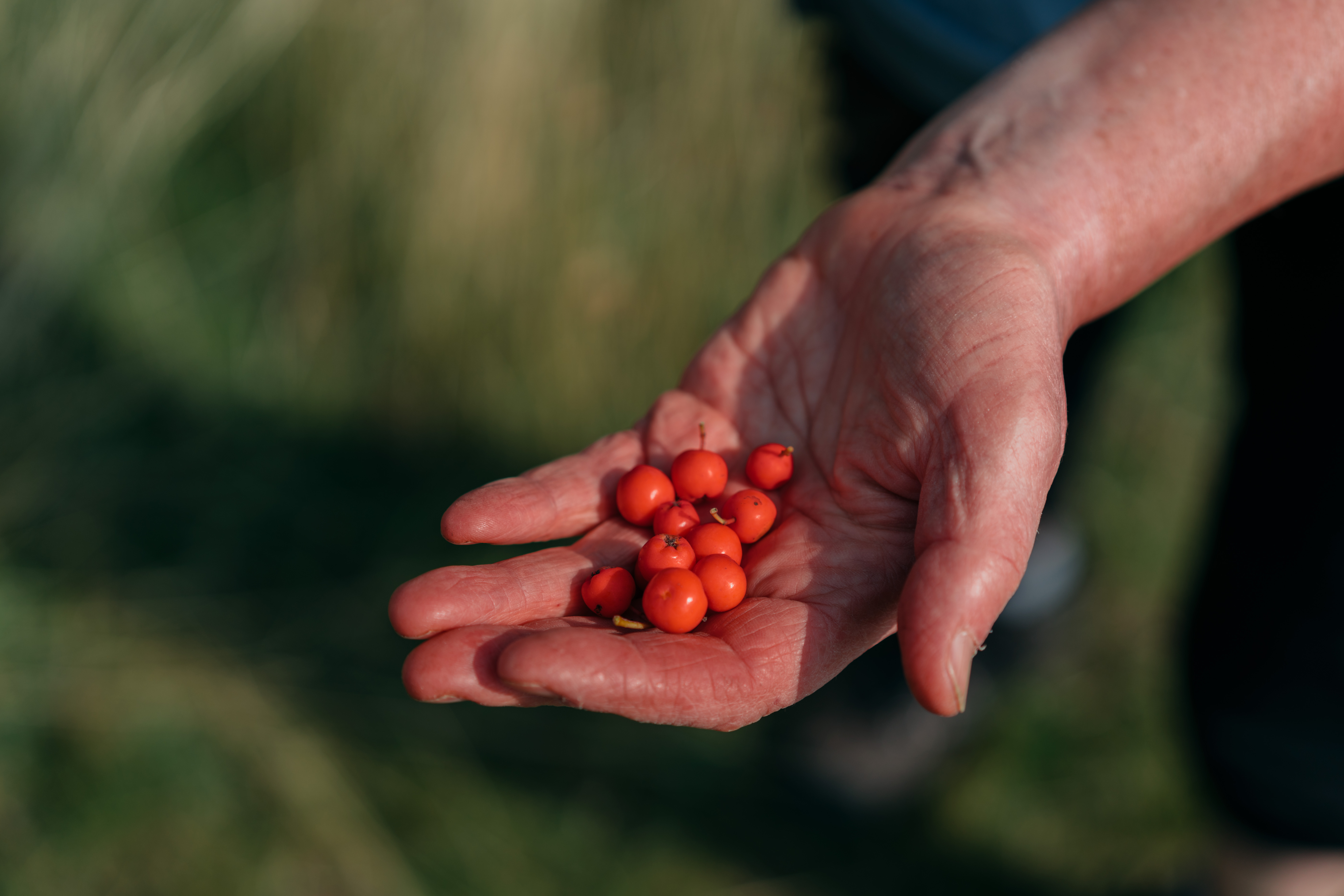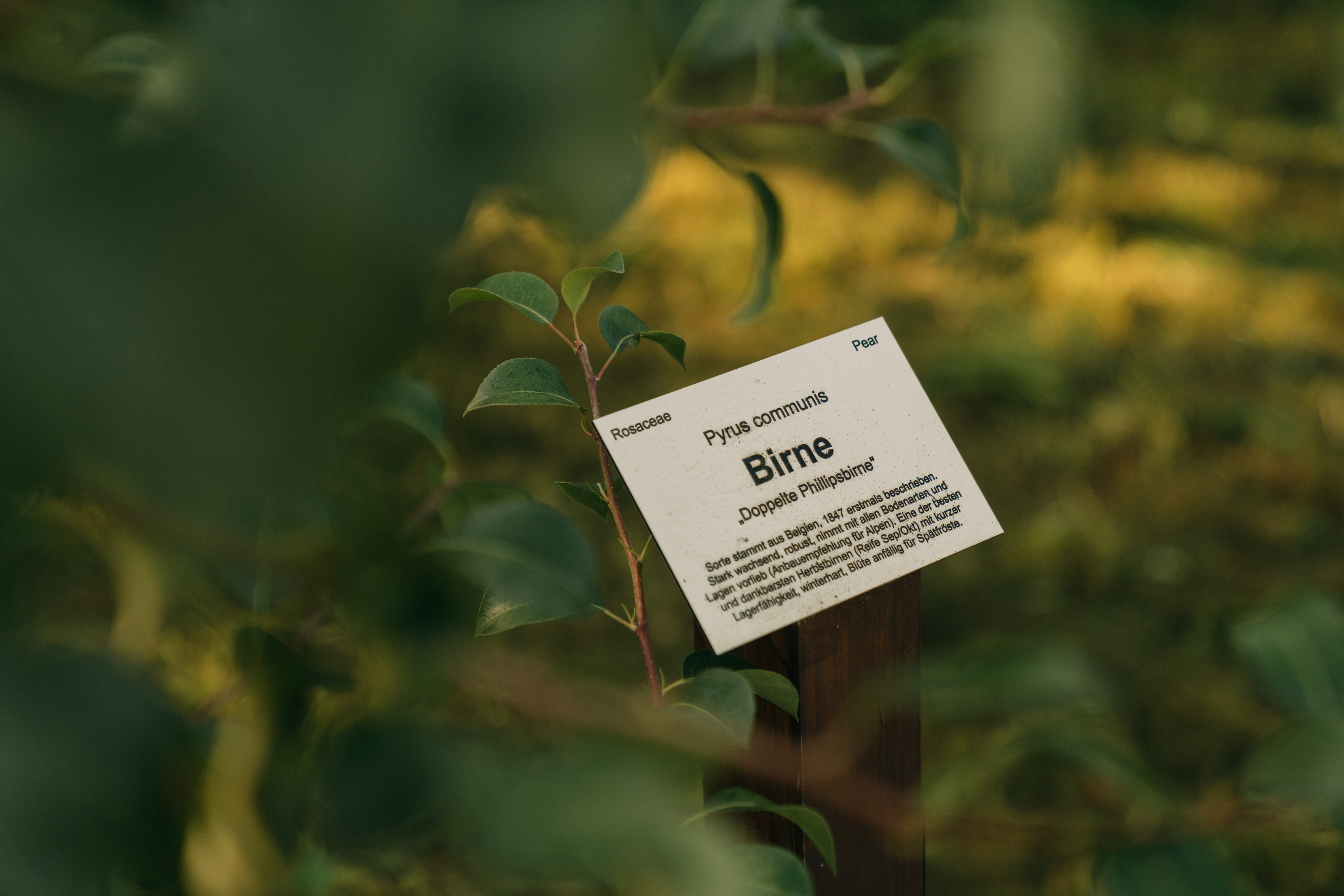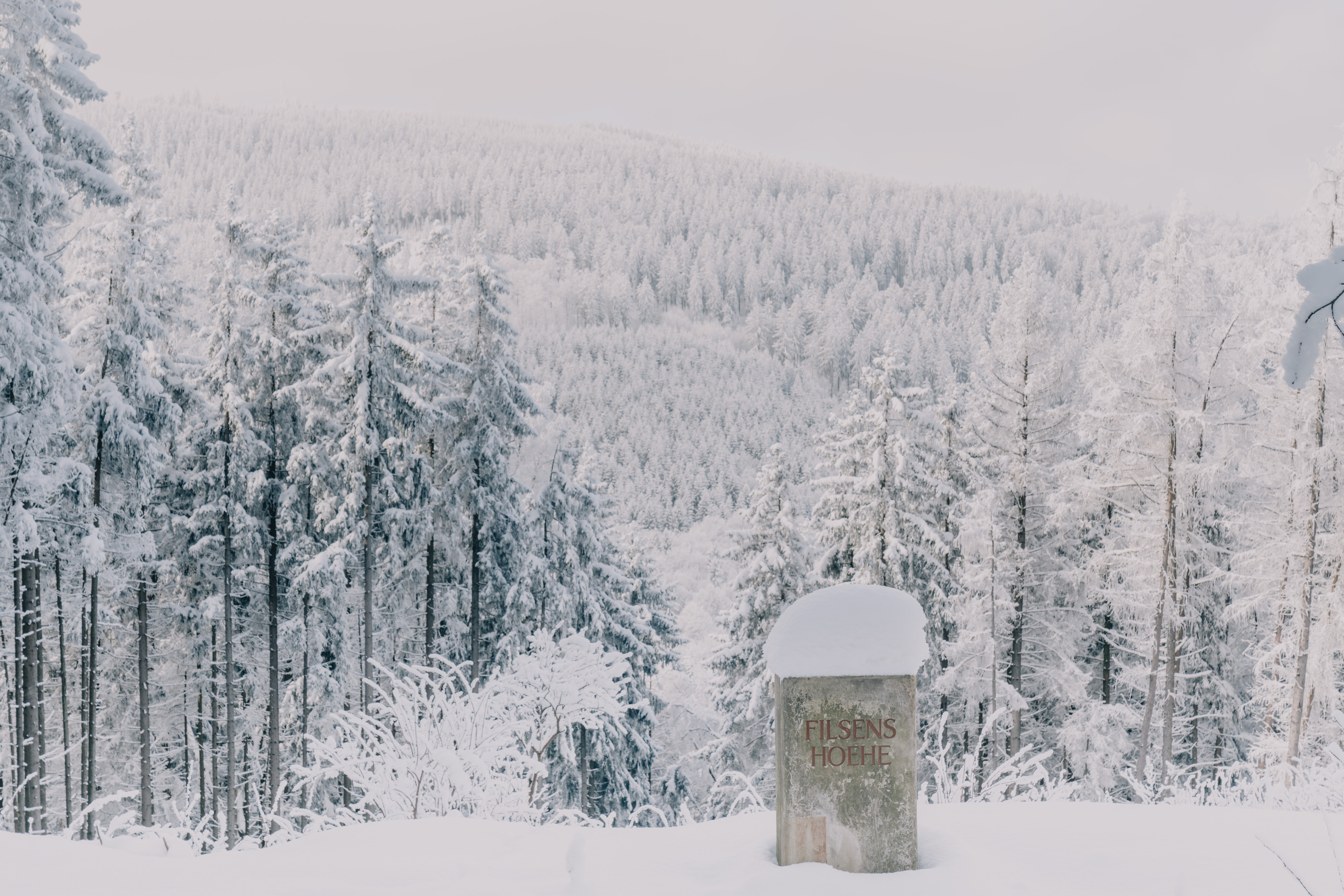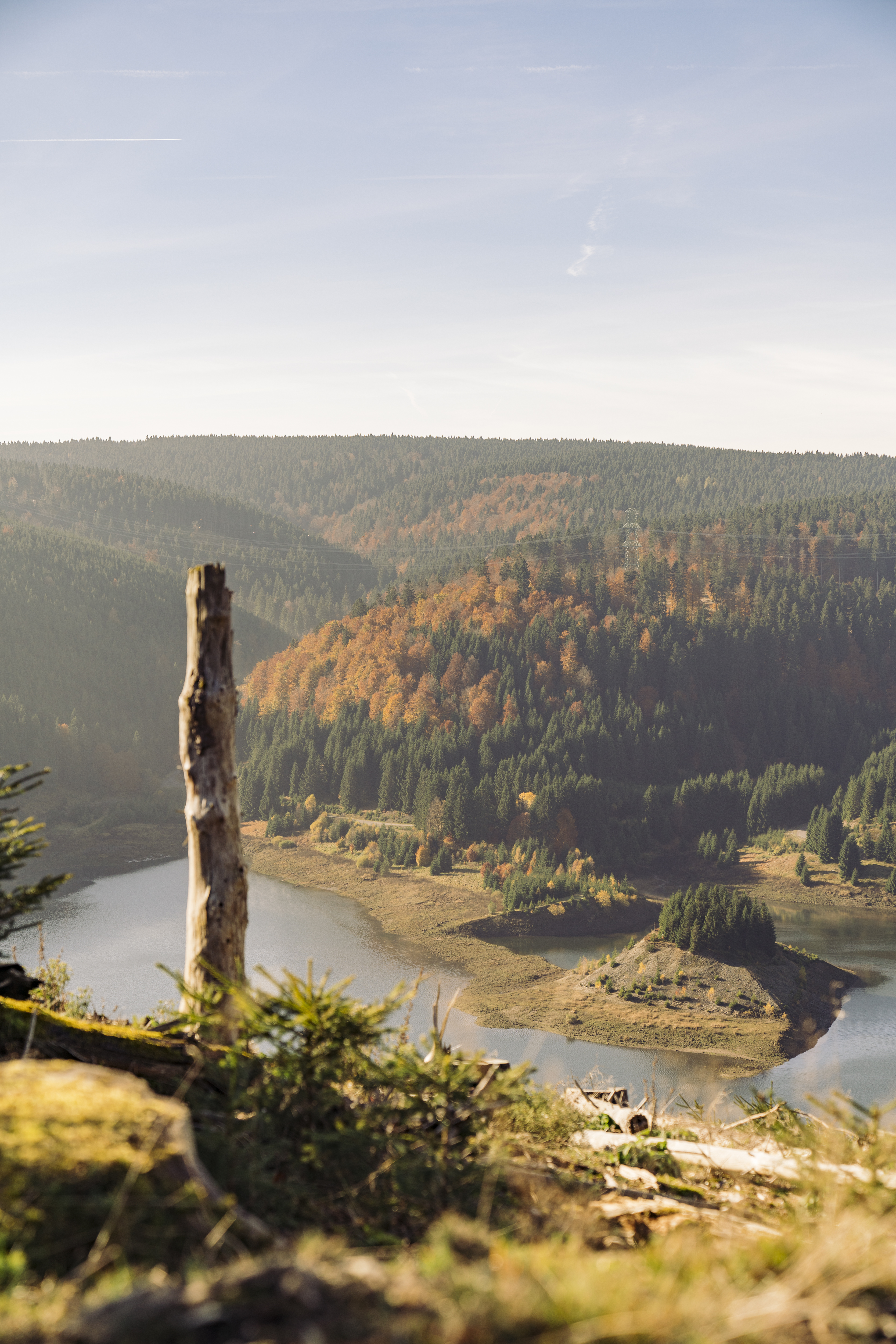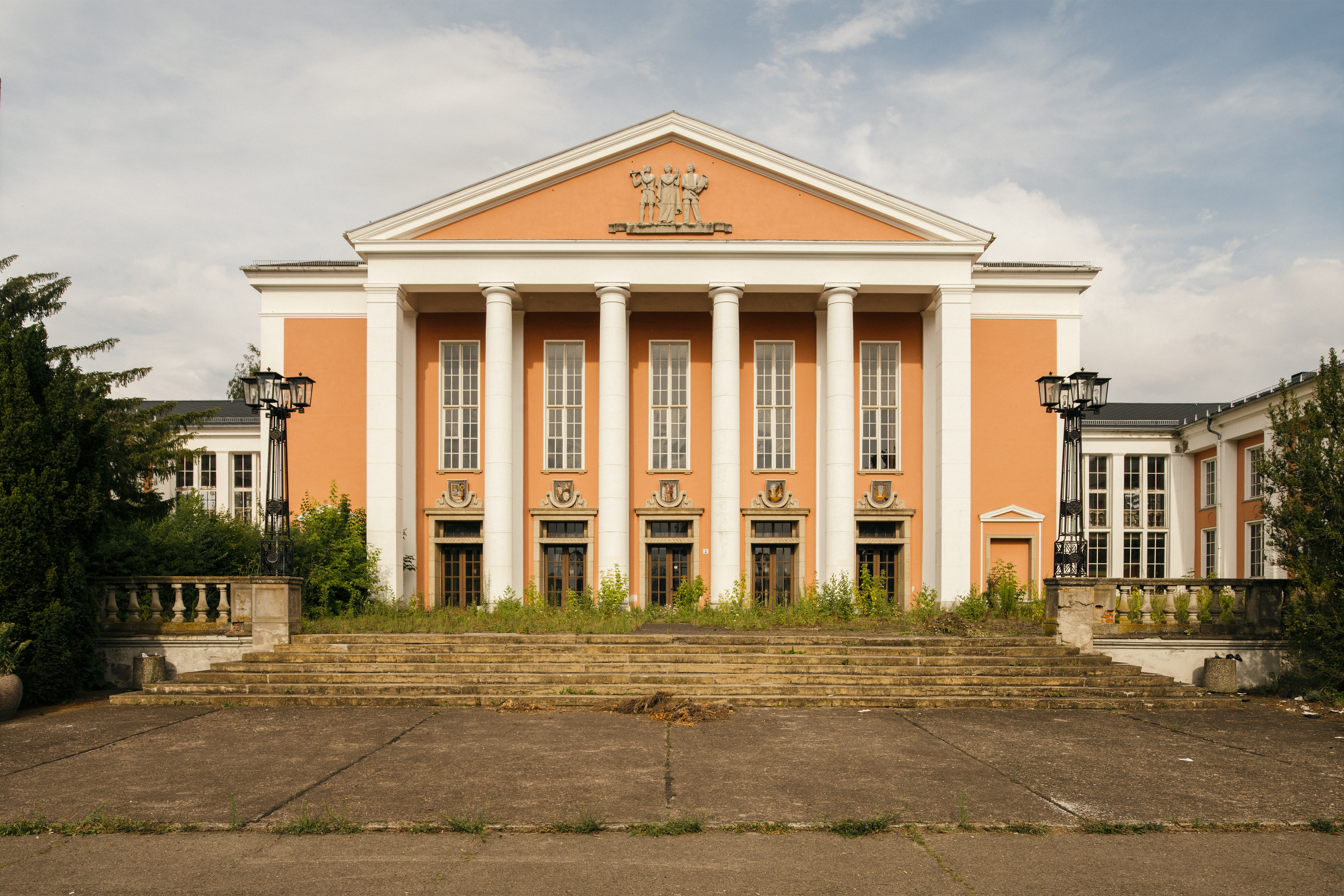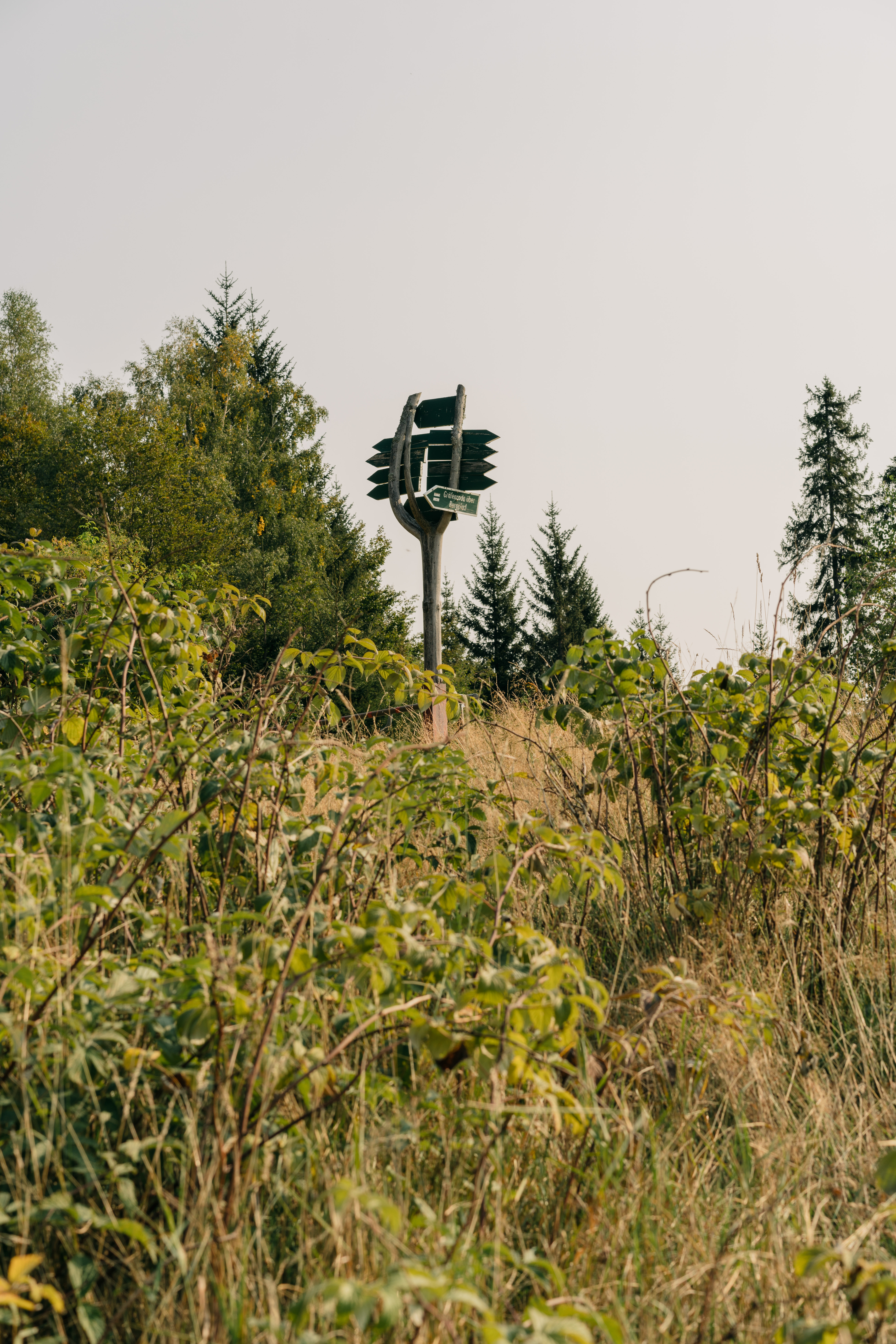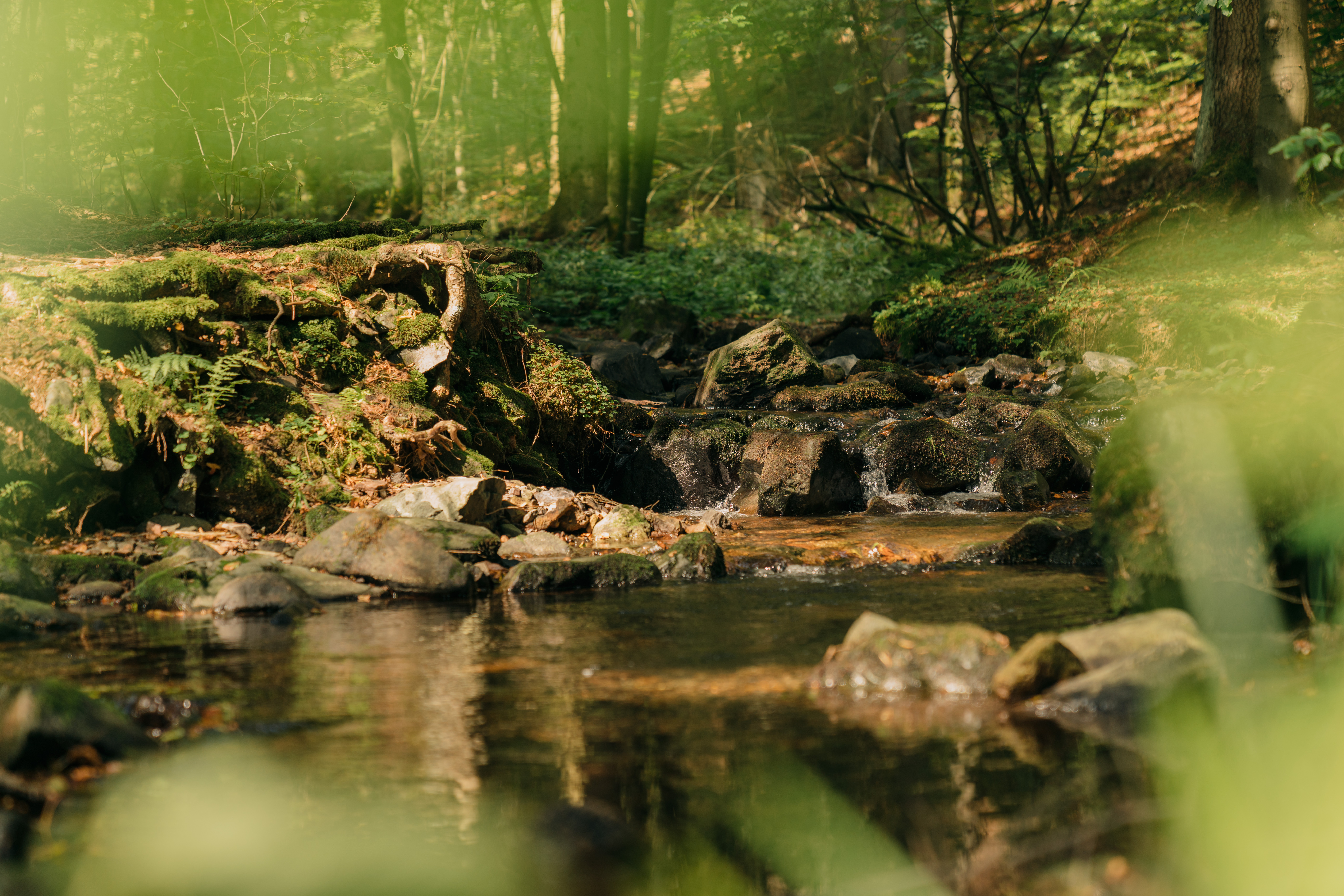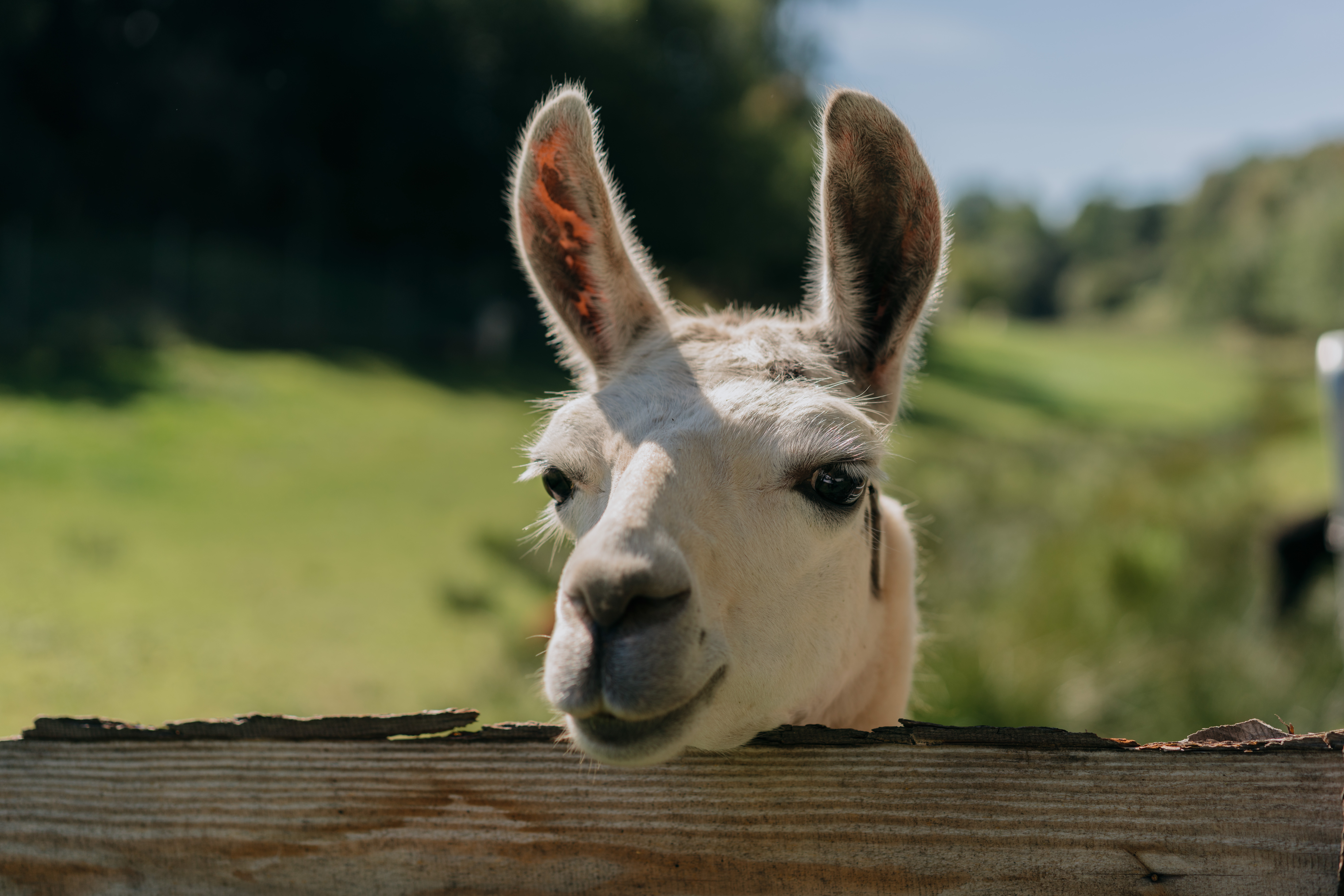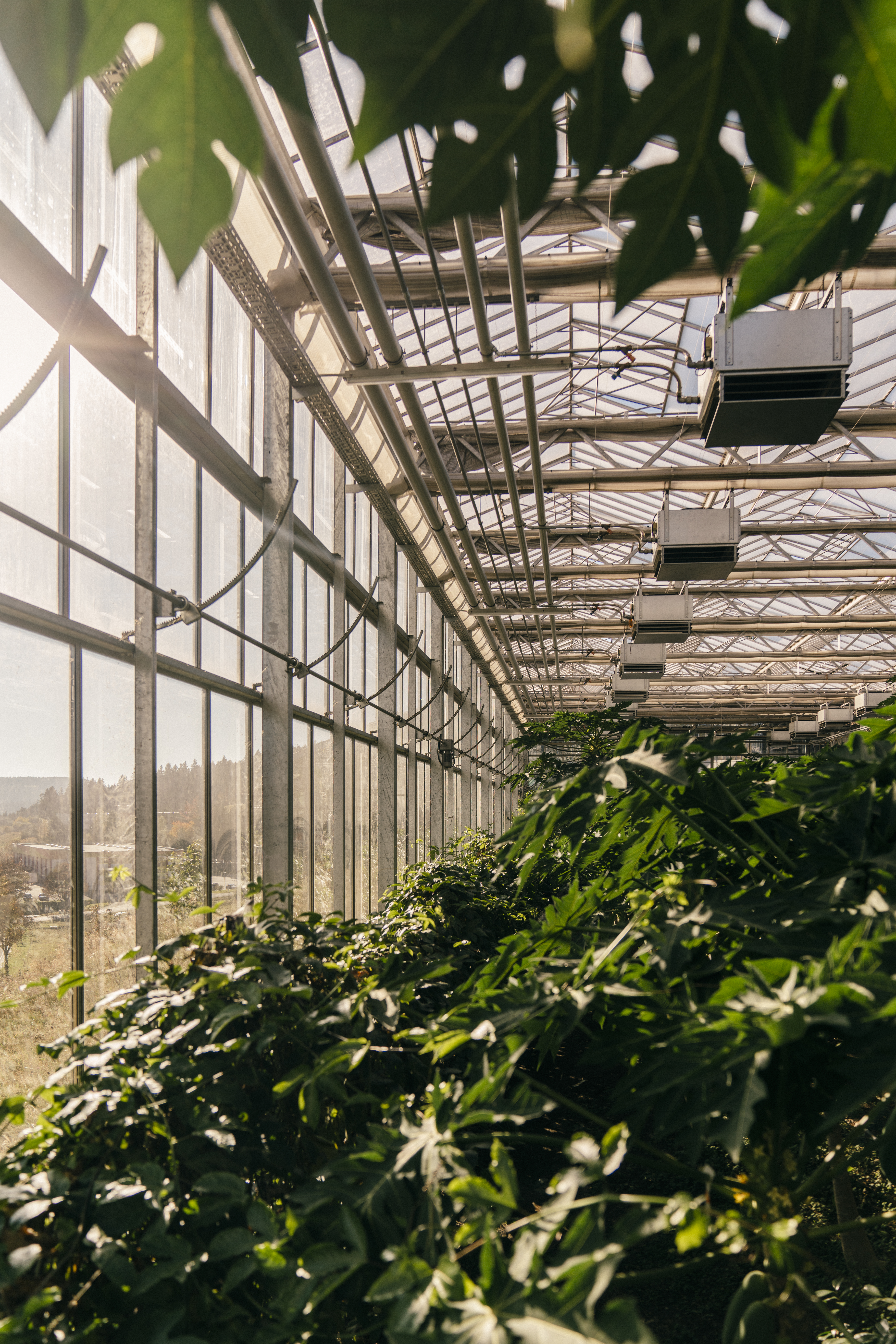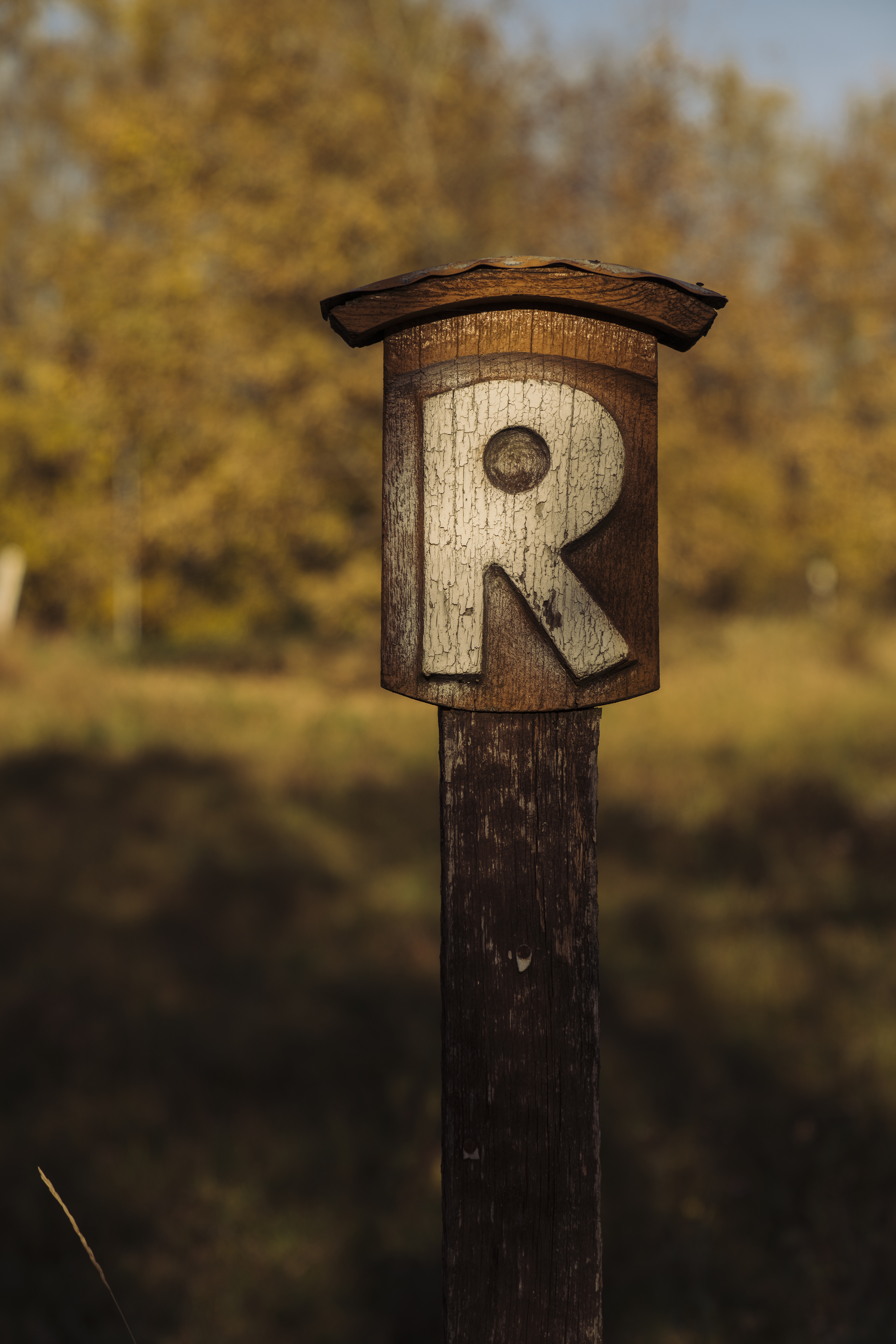HER(R)BERGSKIRCHEN
THURINGIAN FOREST
THE INDUSTRIAL HISTORY OF THE FOREST
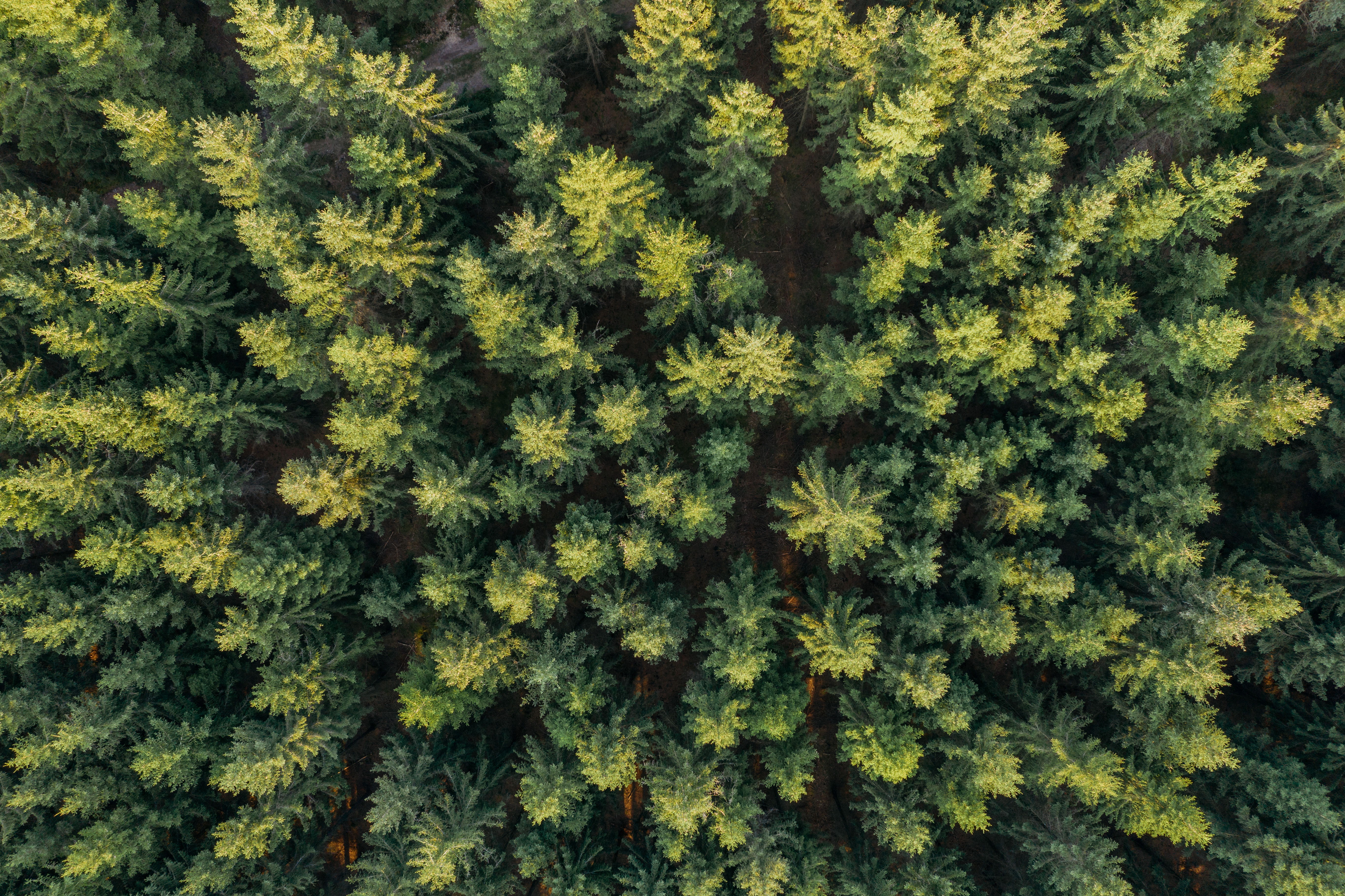
What do we actually see when we look into a forest? And what do we want to see? Calming green hues, a slower pace, and a feeling of deceleration permeate the woods. We seek solace and strength in the mightiness of the trees, who’s towering size and noble silence make us feel small. We find stillness in the rocks, and the eternal in the impenetrably dark thicket. We hear the babbling waters below us and the chirping of the birds high above. This romantic image of the forest, although somewhat modern, has been around for centuries. But then of course, that isn’t the only reality. Today, foresters see this same landscape through their own lens. Trees are seen as wood to be stacked, and hunters see the animals as potential meat. Caspar David Friedrich, who famously fused German nationalism with nature, created the pictorial blueprint of what we like to call, somewhat ironically, the “German Forest”. If you look carefully, you can find hints of industrialization in his work. And not just of the timber industry. In one of his paintings depicting the Ore Mountains, you might recognize the closed cover of conifer trees, which did not in fact grow from natural seedfall, but rather were planted by forest workers during the period of early industrialization. The wood was used for the construction of tunnels for the mining industry, and furnaces for the metal industry, requiring fast growth for quick turnover of timber. The high medieval equivalent of the gold rush in Saxony was known as the ‘Berggeschrey’ or ‘silver rush’, which left a trail of mines, waste and monoculture in its wake.
So what else did they see? They saw endless amounts of wood. And they saw sand. And they saw the potential for the combination of these available resources to result in the production of glass.
The Thuringian Forest is also a historical industrial area. So what did people see in the dark valleys? Besides the groves that were not always safe to travel through and the rough terrain, it turns out there was iron ore. While people settled at the foothills of the mountains early on and traded across the ridges, the high elevations of the Thuringian Forest did not become populated until about 600 years ago. Before that, people mostly came in the summer months to dig for precious metal ore in the forests. With innovations such as black powder in the late Middle Ages, mining became a stationary industry. People then began to settle on the ridges of mountains, traveling to the forests to work. Meanwhile in the Harz Mountains, the oldest German mining region, the resources on the surface had already been exploited and the forests had been cleared. The untouched territory was now in the south. The name ‘Schmiedefeld’, meaning ‘Blacksmith field’, tells you something about the purpose of the village when it was founded. Just around the corner, in the “primeval forest” of the Vessertal, untouched by forestry for decades, you can still find slag in the river beds and some remains of the foundations of late medieval and early modern mining constructions scattered in the meadows.
The ecological structure of the forest was completely transformed over the span of just three centuries. As a result, other species settled here and new flora and fauna developed. The Thuringian Forest of the early modern period was an overexploited region, similar to the larger scale exploitation we see today in the Amazon or the southern Congo.
So what else did they see? They saw endless amounts of wood. And they saw sand. And they saw the potential for the combination of these available resources to result in the production of glass. In the Middle Ages, regions with fewer settlements were particularly attractive locations for the construction of glassworks. They made mobile structures with furnaces that were built on site, and mills for crushing rocks. Glass production requires quartz sand, and the region happens to be rich in sandstone. The name Sandberg (sand mountain) near Steinheid reveals why the place has long been a center of industrial glass production. The wood, in turn, was needed not only for the charcoal that fired the furnaces, but also for making potash (potassium carbonate), an ingredient that goes into making what is known as forest glass. Potash lowers the melting point of the sand, so for every two parts of ash in the furnace, there is one part sand. When the forest was felled, the factories moved on, and as early as the 14th century, villages further south in the Spessart region complained about the disappearance of their livelihood due to the clearing of the natural forests. But this was only the beginning. The great founding era of the glass industry in the Thuringian Forest was still to come. It began in the glass town of Lauscha in 1595. The crux of the matter is this: the only nature we have left, exists in relation to what humans have carved out of it. Forests make way for villages, fields and pastures. The damming of streams allows for the construction of various mills - for paper, cutting, grinding, powder, oil, tanning and then of course the transport of the goods that these industries produce, uprooting trees and leaving behind piles of rubble and holes in the ground. Timber is extracted for mining, building houses, extracting resin and heating materials. Huge herds of animals raised for and by humans eat up the forest meadows. Wild horses died out here in the 15th century, before man even settled on the land. Beavers were exterminated around 1600 because their dams interfered with the mills. Whoever would have wandered along the banks of the river Schleuse or the river Vesser must have heard the metallic beat of hammers powered by the running water.
In some places, the emergence of modern tourism has led to the destruction of functioning communities. But in this case, the region was actually saved by it.
The ecological structure of the forest was completely transformed over the span of just three centuries. As a result, other species settled here and new flora and fauna developed. The Thuringian Forest of the early modern period was an overexploited region, similar to the larger scale exploitation we see today in the Amazon or the southern Congo. But in the case of the Thuringian forest, the numerous deals and trades were made by early capitalist entrepreneurs, not by gigantic corporations, and there were no postcolonial mechanisms in play like slave labour or coercion. Nevertheless, the people who fired up the pitch furnaces day in and day out and lay in the tunnels for hours on end all died far too young. In some places, the emergence of modern tourism has led to the destruction of functioning communities. But in this case, the region was actually saved by it. Soon after the invention of the steam engine, more and more regulations were introduced into the forestry industry, and soon it began to fade out. The concept of sustainable thinking emerged as early as the 19th century. In 1863, reforestation projects were set into motion in the area of today's biosphere reserve. The development of winter sports certainly had their own impact on the surrounding nature, but their effects are rather negligible in comparison with the damage done in the 16th century. In the early 20th century, the hiking tourism that developed around the Rennsteig tried to raise awareness about the green forests, but at that time people were still not totally environmentally conscious . Today, one must look closely to recognize the remnants of industrial forestry. So what do we see when we look into the forest? An industrial area that has come to rest, as well as the industrial area of modern tourism. The vast forest full of trees glistening like a green sea makes you pause and take a deep breath, and appreciate how lucky we are that it is still there to behold.
